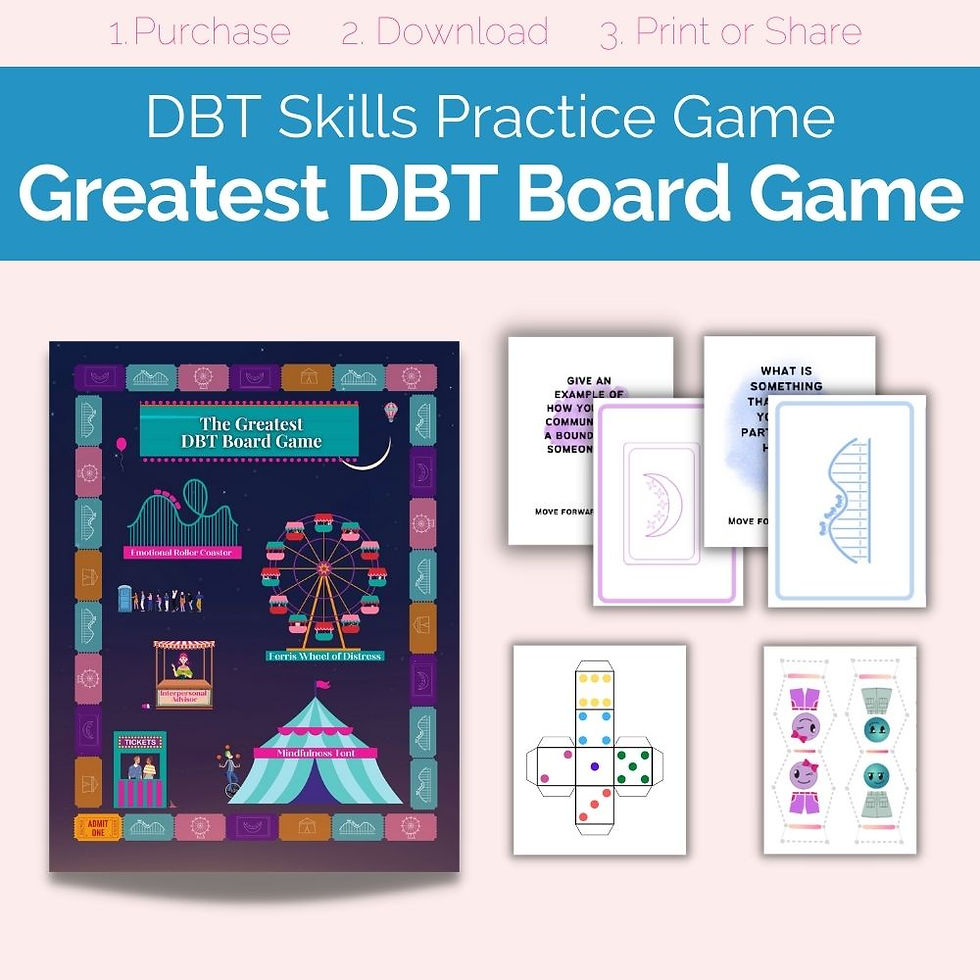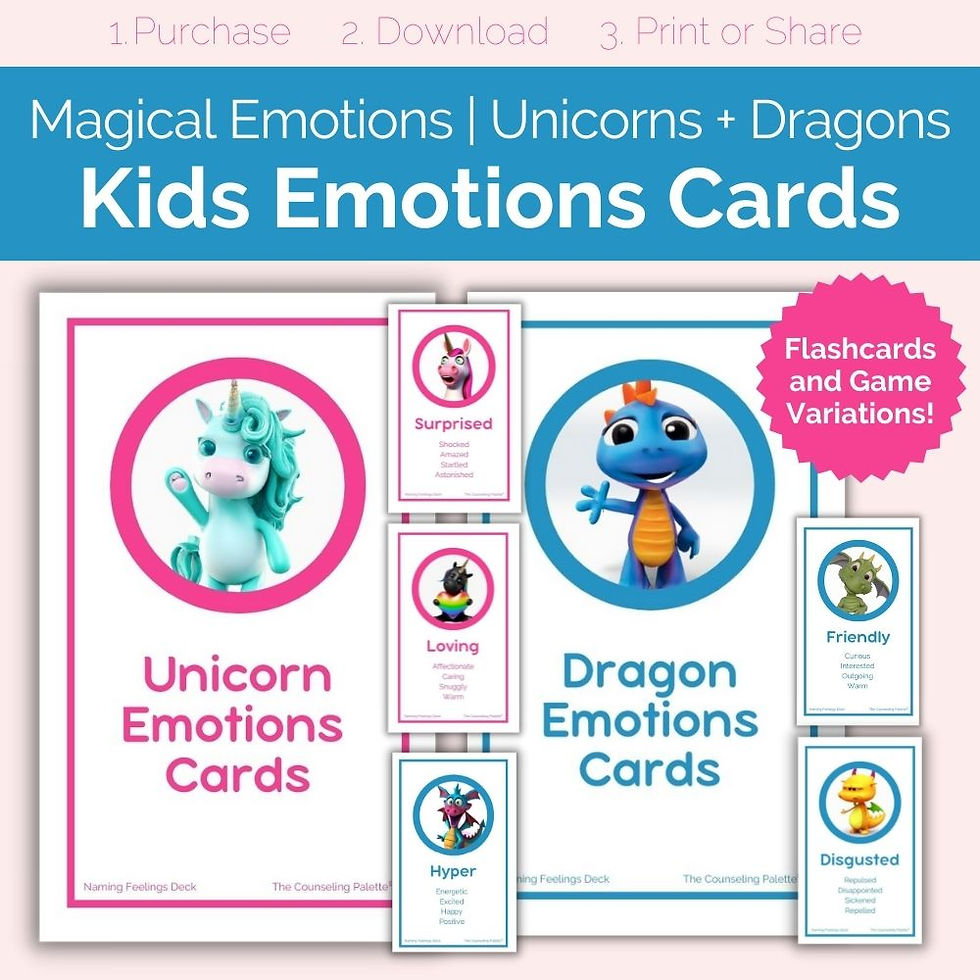Worksheets can help you or those you work with cope with strong emotions. Learn more.
Big emotions can be overwhelming. They may be frightening, or lead to behavioral and relationship struggles. The opposite can be difficult as well – many people learn to shut off feelings, or don’t even realize when they’re having them. This can cause problems down the road.
Feelings worksheets are a tool that therapists and individuals can use to help understand and deal with emotions. Some focus on recognizing core feelings, like feelings wheels, and others help people learn to accept or cope with their experiences.
To get started, check out the quick highlights list with resources you can grab right away. Keep scrolling to review all 21 worksheets about working with feelings and related topics like emotional regulation, coping with anxiety, and dealing with trauma and post-traumatic stress disorder (PTSD).
Resource Highlights

Best for: Kids
This set of kids anger management PDFs starts with the anger iceberg. The iceberg helps kids understand the feelings underneath their anger.
The feelings volcano targets triggers and signs of escalating anger, while the mindful mountain focuses on coping skills. You can learn more about the anger management tools and check out the printables here.
Best for: Teens, Adults
Practice learning and coping with difficult emotions. The emotions wheel kit includes a sample feelings wheel along with blank examples and posters to work with. You can review and discuss emotions, and create your own based on feelings you commonly experience. Learn more here.

Best for: Adults, Some Teens
Adults dealing with intense and overwhelming emotions may benefit from this emotions worksheet. It walks through the experience of strong emotions and how to ride them out or use coping skills when necessary.
It includes tips on when to go with feelings and when it's necessary to get help in the moment. Purchase it individually or get the best deal in this bundle.
Best for: Adults, Teens, Some Tweens
The cognitive behavioral therapy (CBT) triangle reviews the connection between thoughts, feelings, and behaviors. In some cases, ongoing thoughts influence ongoing feelings.
The triangle worksheet clearly walks through the triangle itself and how to use it to change thoughts. Get it here.
Feelings Wheels Worksheet
Feelings wheels, which are typically color-coded, are a popular place to start. To discuss emotions, it helps to have a common language. Many people are only aware of a few emotions, such as happy, sad, and angry.
There are several other core emotions, as well as offshoots of these. Core emotions, according to well-known expert Robert Plutchik (Plutchik, 1982), include:
Fear
Anger
Disgust
Surprise
Anticipation
Trust
Joy
Sadness
Plutchik organized the feelings in a circle as a way of showing how emotions connect to each other. Therapists and others have taken this idea and run with it – leading to the creation of hundreds of color-coded emotions wheels.
These tools are often used to help people visually see, understand, and identify what they’re feeling.
Here are a few feelings wheels to choose from that included activities for yourself or clients as well. I’ve included various types of wheels and activities to choose from.
Best for: Kids and Teens
Available from: Teachers Pay Teachers
This resource includes a wheel and feelings list with emojis, offering a reader-friendlier and lighter version of the wheel. It’s a good fit for kids and younger teens.
Best for: Older Children, Teens, & Adults
Available from: The Counseling Palette
Our emotion wheel kit includes a basic wheel, which includes common core emotions along with physical sensations and coping skills. The kit includes worksheets, so clients and others can fill out blank sections as they like.
The tool can be used as a way to understand feelings as well as a coping tool down the road. It’s a good activity for groups as well. Learn more about the kit here.
Best for: Older Teens, Adults
Available from: FeelingsWheel.com
This version of the feelings wheel may be the most familiar to many. It includes hundreds of emotions, broken down from primary emotions into broader sections. It doesn’t include activity instructions, however it can be a good reference list for therapists or others who want to offer options to choose from.
Feelings Charts
Similar to emotion wheels, feelings lists can help people start to identify and understand emotions. They are often quite long, a page or several pages, so it’s unlikely a feeling will be missed. These worksheets include the list format.
Best for: Teens, Adults
Available from Therapist Aid
This is a well-organized list that breaks basic emotions down by category of four primary emotions. Included are: happiness, sadness, anger and fear. Each section has 10 additional feelings words.
Best for: Kids, Younger Teens
Available from: Teachers Pay Teachers
This is a one-page list that’s easy to read and has a bit of flare mixed in. Emojis help the list feel more accessible, and it may be a solid tool for younger kids.
Best for: Pre Teens, Younger Teens
Available from: Teachers Pay Teachers
If you’re looking for a visual tool for teens, this may be it. It includes teen characters acting out various emotions, with the feelings listed underneath. It can be a quick reference or part of a larger activity.
Best for: Kids, Teens, Adults
Available from Word Art
This one isn't a pre-made worksheet, but if you or your clients have online access, you can create a custom feelings word image, similar to the cover photo.
Emotion Thermometers
Emotion thermometers are often taught to help kids and teens understand the fluctuation of emotions. It’s a helpful activity that you can do even without a worksheet.
Kids can draw thermometers and fill them up depending on how strong the feeling is. For example, a little bit angry may only fill around 10% of the thermometer, while ready to punch someone would be at or near 100%.
These worksheets use the thermometer or similar techniques. They are compatible with therapies like CBT as well as trauma-focused cognitive behavioral therapy, or TF-CBT.
Best for: Kids, Teens
Available from: Therapist Aid
This is a straightforward tool that includes thermometers to fill out for common emotions. It includes happy, sad, angry, worn out, worried, and annoyed.
Best for: Kids, Teens, Adults
Available from: Wisconsin Office of Children’s Mental Health
This may not technically be considered a worksheet, but it’s an attractive and effective tool that includes coping actions relating to each difficult emotion.
Emotional Regulation Worksheets
It can be tricky when teaching about feelings, because we want a balance between accepting them and managing them. Validation and learning to allow feelings is one of the important parts of healing for issues like anxiety, depression, and PTSD.
However, sometimes feeling out of control can interfere with recovery. It can also begin to cause problems at home, work, or school. So in daily life, it can help to have some methods to calm down quickly and get back to the moment.
These tools include techniques to help with regulating feelings when needed.
Best for: Older teens, adults
Available from: The Counseling Palette
Our emotions worksheet focuses on regulating overwhelming feelings. Often people avoid recovery from anxiety, PTSD or alcohol due to a fear of the unknown.
The 3-page worksheet walks through how to ride out emotions if possible, or cope with them when they become overwhelming. You can check out the individual worksheet here, or get it with the larger bundle.
Best for: Teens, Adults
Available from: PsychPoint
DBT uses a technique called PLEASE for emotion regulation. It stands for treating physical illness, balanced eating, avoiding substances, sleeping enough, and exercising regularly. The idea is that by addressing these physical issues, emotion regulation will become a little easier.
Thoughts, Feelings and Behaviors Tools
In cognitive behavioral therapy (CBT), the cognitive triangle (or CBT triangle) is often used to teach about emotions. Feelings are part of a triad, including thoughts and behaviors as well.
The idea is that a thought often becomes a feeling, which leads into a behavior, and then cycles back into a thought. Most often, CBT therapists teach about intervening at the thought, however managing feelings and changing behaviors come into play as well.
These worksheets use the CBT triangle and other techniques to help teach about emotions.
Best for: Older Kids, Teens, Adults
Available from: The Counseling Palette
Practice identifying thoughts, feelings and behaviors, as well as changing them through CBT techniques. This worksheet has examples as well as open spaces for you or clients to practice understanding and changing emotions. Get it here.
Best for: Teens, Adults
Available from: University of Washington
You may have already seen this commonly used and straightforward CBT worksheet. If you’re looking for a simple, no-frills option, this is it.
Feelings Worksheets by Age Group
Looking for materials for a specific group you work with, or for your child or yourself? Here are more options broken down by age group.
Worksheets for Kids
Some of the worksheets above are appropriate for kids, but often it helps to have materials specifically geared for various age ranges. Here’s a list of some popular tools based on grade or age level.
Body Language and Identifying Emotions, at Teachers Pay Teachers
Multiple Feelings and Emotions Worksheets, at Teachers Pay Teachers
Kindergarten Emotions Worksheet, at K5 Learning
Worksheets for Teens
Often teens respond to tools for both younger and older audiences. Many of the worksheets above may work for this audience. However, here are some tools that are specifically designed with adolescents in mind.
Emotional Intelligence Worksheets for Teens, at Ohio.gov
Anger Assessment Worksheet, at Teachers Pay Teachers
DBT Emotion Regulation Skills, at Teachers Pay Teachers
Worksheets for Adults
Feelings worksheets geared for adults can be a bit harder to come by. Many include dialectical behavioral therapy (DBT) techniques. DBT therapists can also overlap and use tools relating to CBT, which is a core part of DBT.
Here are various worksheets created for adults that cover emotions, regulating, and specific recovery topics.
Grounding Stone Mindfulness Kit, at The Counseling Palette
DBT Therapy Skills Workbook, at Amazon
Emotion Regulation Skills, at Therapist Aid
Other Feelings Resources
The following tools aren't worksheets exactly, but include feelings-related activities and prompts.
If you use dialectical behavioral therapy (DBT) you may find the DBT board game helpful. It's not exactly a worksheet, but it includes dozens of prompts, including feelings skills.
It covers four DBT categories, including distress tolerance, emotional regulation, interpersonal effectiveness, and mindfulness. Download it here.
FEELOPOLY is a popular game great for kids, as well as some teens and young adult groups. The game includes feelings prompts, along with a cooperative goal to validate all types of emotions.
You can use FEELOPOLY as a teaching or reinforcement tool about basic emotions. Learn more here.
If you're interested in using CBT to help with emotions and overall mental health, you may find this worksheet bundle helpful.
It covers the basic skills used in CBT-based therapies for anxiety and PTSD. You can use the worksheets individually over time, or together as a workbook. Download it here.
Are you looking to help kids identify emotions in a fun and less-threatening way? Enter the Magical Emotions deck, featuring unicorns and dragons. The set also includes games based on familiar children's card games. You can also pair it with the Kids Coping Cards. Check out the feelings set here.
Giant Therapy Tools Kit
Interested in downloading a bunch of tools at once? The Counseling Palette's Entire Store Bundle includes feelings worksheets, games, and other therapy-related activities. See the details here.
Emotions are a good place to start when it comes to coping, feeling better, and dealing with mental health. To find more resources, check out our store that includes worksheets and downloads on anxiety, PTSD, mindfulness tools, and more. Visit here to find resources.
Sources
Plutchik, R. (1982). A psychoevolutionary theory of emotions. Social Science Information. 21: 529-553.https://doi.org/10.1177/053901882021004003












































































